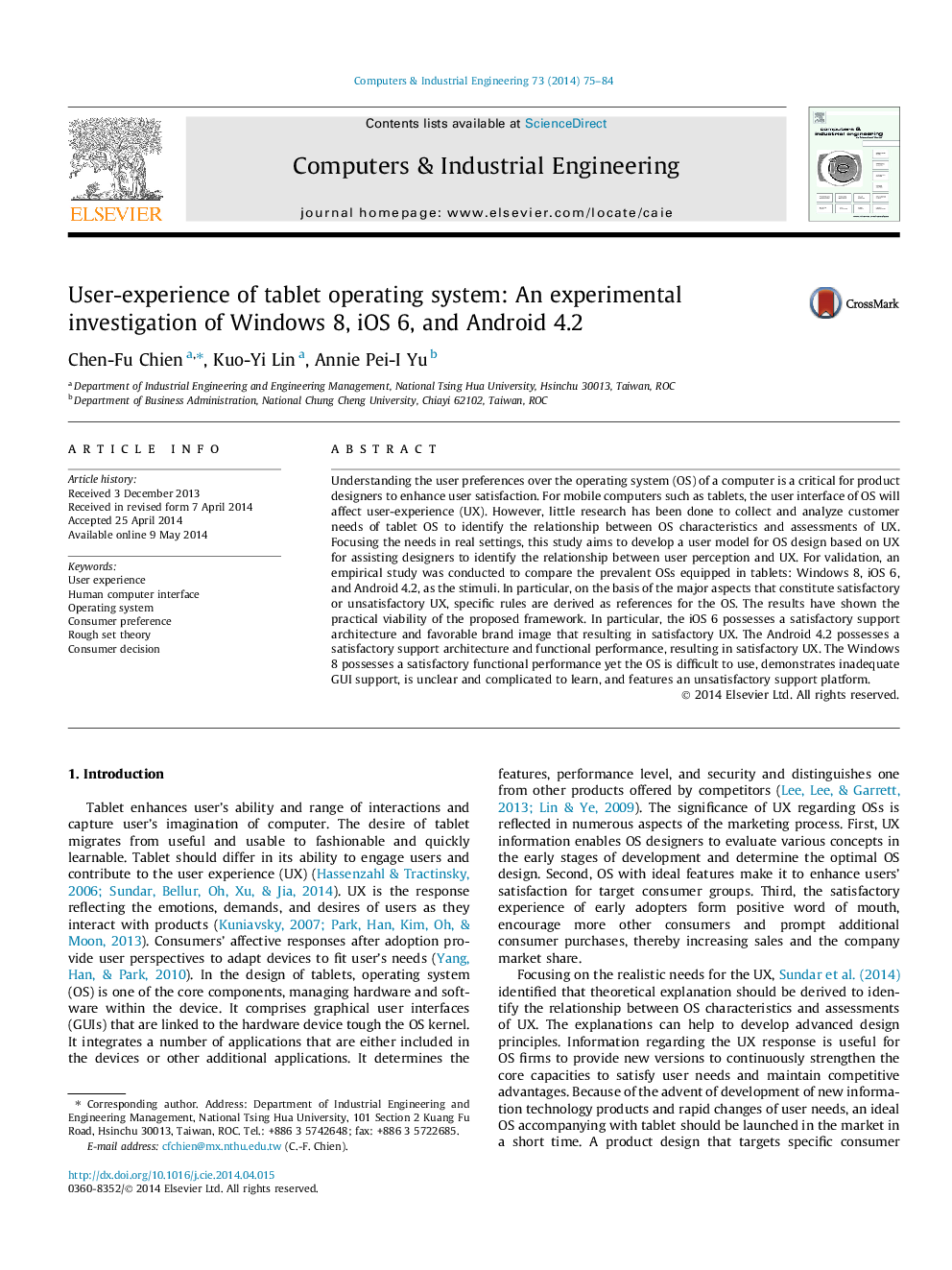| Article ID | Journal | Published Year | Pages | File Type |
|---|---|---|---|---|
| 1134058 | Computers & Industrial Engineering | 2014 | 10 Pages |
•A framework is constructed to identify the antecedent for user preferences effectively.•Rough set theory approach is developed to analyze user experience data to derive useful rules.•An empirical study was conducted to compare Windows 8, iOS 6, and Android 4.2, as the stimuli.•Specific rules are employed to support product design based on user experience.
Understanding the user preferences over the operating system (OS) of a computer is a critical for product designers to enhance user satisfaction. For mobile computers such as tablets, the user interface of OS will affect user-experience (UX). However, little research has been done to collect and analyze customer needs of tablet OS to identify the relationship between OS characteristics and assessments of UX. Focusing the needs in real settings, this study aims to develop a user model for OS design based on UX for assisting designers to identify the relationship between user perception and UX. For validation, an empirical study was conducted to compare the prevalent OSs equipped in tablets: Windows 8, iOS 6, and Android 4.2, as the stimuli. In particular, on the basis of the major aspects that constitute satisfactory or unsatisfactory UX, specific rules are derived as references for the OS. The results have shown the practical viability of the proposed framework. In particular, the iOS 6 possesses a satisfactory support architecture and favorable brand image that resulting in satisfactory UX. The Android 4.2 possesses a satisfactory support architecture and functional performance, resulting in satisfactory UX. The Windows 8 possesses a satisfactory functional performance yet the OS is difficult to use, demonstrates inadequate GUI support, is unclear and complicated to learn, and features an unsatisfactory support platform.
